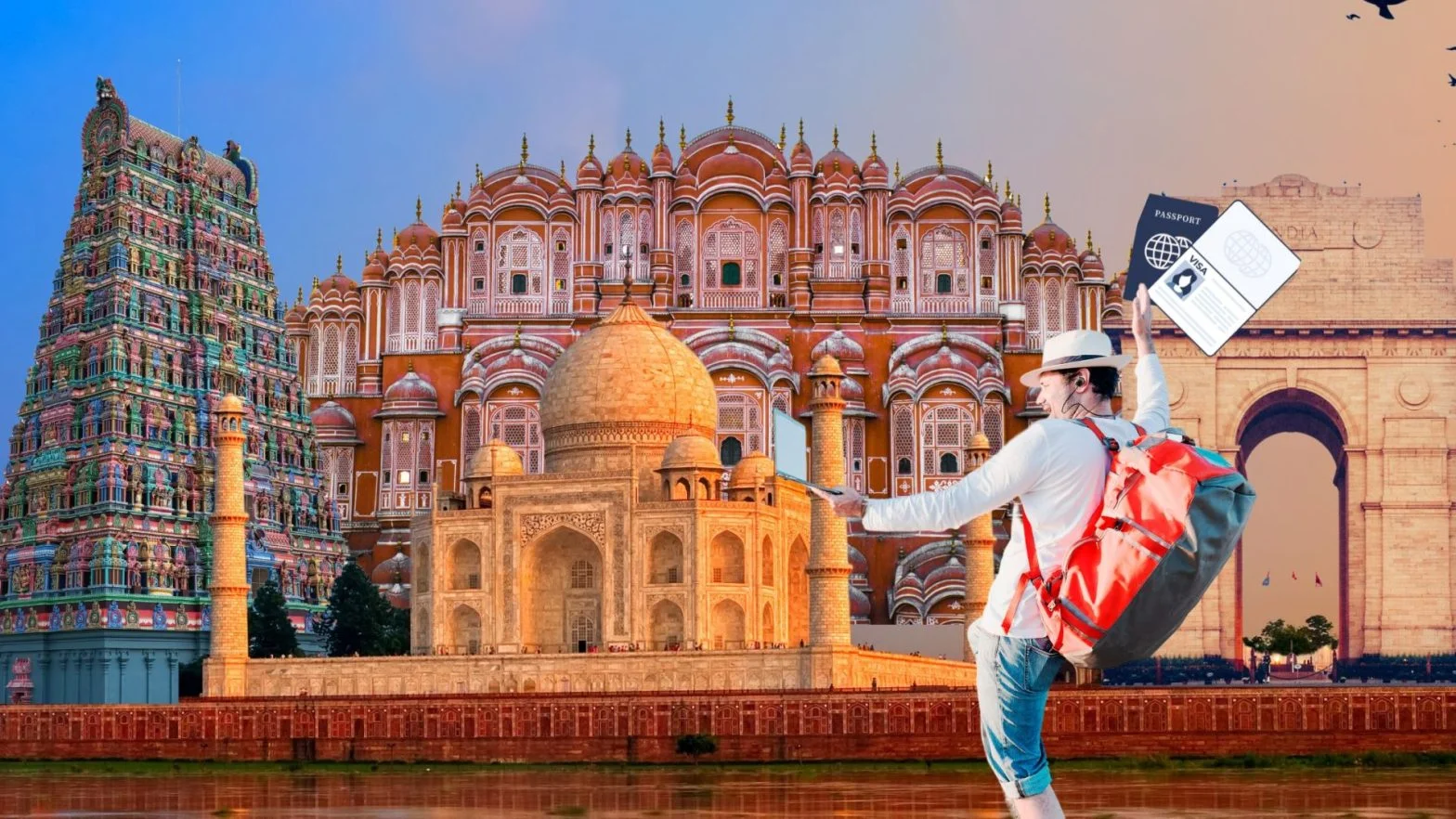Traveling to India as a foreigner can be an exhilarating adventure filled with vibrant colors, tantalizing flavors, and rich traditions. However, navigating this diverse land comes with its own set of challenges—especially when it comes to managing your finances. From bustling markets where haggling is the norm to serene temples that require donations in cash, understanding how to pay effectively is crucial for making the most of your experience.
This guide will walk you through everything you need to know about being a foreigner in India, including cultural differences and practical tips for adjusting. You’ll also discover easy ways to manage your money while avoiding common pitfalls along the way. So whether you’re sipping chai at a roadside stall or shopping for souvenirs in local bazaars, you’ll feel confident handling payments like a pro!

Table of Contents
The Experience of Being a Foreigner in India
Stepping into India feels like entering a vibrant tapestry of sights, sounds, and smells. Each city offers a unique flavor, from the chaos of Delhi’s streets to the serene beaches of Goa.

As a foreigner, the experience of being in India can be overwhelming at times. The culture shock is real, but so is the warmth and welcoming nature of the people. Here are some common aspects of being a foreigner in India:
1. Attention and curiosity: As a foreigner, you will attract a lot of attention from locals. People may stare or even approach you to take pictures or strike up a conversation. This can be uncomfortable at first, but most people are genuinely curious and mean no harm.
2. Language barriers: India has 22 official languages and over 1,500 dialects, making communication a challenge for foreigners who do not speak any of them. However, English is widely spoken in major cities and tourist areas.
3. Cultural differences: India has a rich cultural heritage that may be drastically different from what you are used to. Be prepared to encounter customs and traditions that may seem strange or unfamiliar.
4. Negotiating prices: Bargaining is a way of life in India, especially when shopping at markets or street vendors. Foreigners are often charged higher prices for goods and services, so it’s important to negotiate and haggle for fair prices.
5. Safety concerns: As with any country, there are safety concerns for foreigners in India. It’s important to be aware of your surroundings and take precautions, such as avoiding walking alone at night and keeping valuables secure.
6. Food and hygiene: Indian cuisine is famous for its spices and flavors, but it may not always agree with the sensitive stomachs of foreigners. Be cautious when trying new foods and stick to restaurants with good hygiene practices.
7. Getting around: Navigating the streets of India can be a daunting task, especially in busy cities like Delhi or Mumbai. Consider hiring a local guide or using ride-sharing apps to make traveling easier.
Despite these challenges, being a foreigner in India also has its rewards. The country is full of vibrant culture, delicious food, and friendly people who are eager to share their traditions and stories with visitors. Embrace the experience and you’ll create unforgettable memories that will last a lifetime.

As a foreigner, you become part of an intricate dance where every interaction is enriched by cultural nuances. The warmth of locals can be both welcoming and overwhelming as they share smiles or engage you in conversation.
Language barriers may pose challenges but often lead to charming misunderstandings that spark laughter. You’ll discover that gestures and expressions can bridge many gaps.
Every meal becomes an adventure; whether it’s sampling spicy street food or enjoying a thali at a local eatery, your taste buds will thank you for the experience. Navigating this kaleidoscope teaches resilience and adaptability while creating unforgettable memories along the way.
Cultural Differences and Tips for Adjusting
Experiencing cultural differences in India can be both exciting and challenging. The vibrancy of its traditions, languages, and social norms might feel overwhelming at first.
To adjust smoothly, take time to learn about local customs. For instance, greetings often involve a gentle nod or “namaste” rather than a firm handshake.
Dress modestly when visiting religious sites; this shows respect for the culture. Understanding dietary restrictions is also crucial—many Indians are vegetarian or vegan.
Communication styles vary widely as well. People may speak indirectly to avoid confrontation. Listening carefully will help you navigate conversations better.
Immerse yourself in community activities like festivals or local markets. Engaging with locals not only enhances your experience but also helps break down cultural barriers while fostering friendships along the way.
Understanding Currency and Exchange Rates
India’s currency is the Indian Rupee (INR). As a foreigner in India, understanding how it works is essential for navigating your financial transactions.
Exchange rates fluctuate daily. This means the value of your home currency can change frequently when converted to rupees. It’s wise to check rates regularly through reliable financial apps or websites.
Local banks and authorized exchange counters offer currency conversion services. However, be cautious; avoid exchanging money with street vendors as they may not provide fair rates.
ATMs are widely available and often give competitive exchange rates. Just ensure that your bank card supports international withdrawals.
Before traveling, notify your bank about your plans to prevent any issues while accessing funds abroad. Familiarizing yourself with these aspects will make managing money during your stay much smoother.
Cash vs Card: Pros and Cons
Cash is king in many parts of India. It’s widely accepted, and small vendors often prefer it. Plus, having physical money can make haggling easier at markets.
However, carrying large amounts of cash can be risky. Theft or loss leaves you vulnerable without quick recovery options.
On the flip side, cards offer convenience and security. Credit and debit cards are accepted in urban areas like restaurants and shops. They eliminate the need to carry cash around.
Yet card payments may not always work seamlessly due to technical issues or connectivity problems. And not all places accept cards, especially rural or smaller establishments where cash reigns supreme.
Choosing between cash and card will depend on your destination within India and personal comfort levels with managing each payment method during your travels.
7 Easy Ways to Pay in India as a Foreigner
Navigating payments in India as a foreigner can be straightforward with the right methods.
First, cash is always king. Small vendors prefer it, so keep local currency handy for daily transactions.
Next up is credit and debit cards. Most major cities accept them widely, but check for international compatibility.
Mobile wallets are gaining traction. Apps like Paytm and PhonePe allow seamless payments once you set them up.
Considering bank transfers? They’re useful for larger amounts but can incur fees and delays.
Travelers’ cheques have become less popular, yet some still find value in using them for safety reasons.
Prepaid travel cards offer another alternative; they lock in exchange rates and simplify budgeting while traveling.
Don’t forget about online banking options that let you manage your finances from anywhere in the world.
Common Scams to Watch Out For
India is a vibrant country, but like any tourist destination, it has its share of scams. Being aware can help you have a safer experience as a foreigner.
One common trick involves overly friendly locals who may offer to guide you around for free but later demand exorbitant fees. It’s best to politely decline unsolicited offers.
Another scam revolves around fake currency exchange booths that promise great rates. Always use authorized exchanges or banks to avoid falling victim.
Watch out for people claiming they are from charity organizations asking for donations in crowded areas. Many times, these individuals don’t represent legitimate causes.
Also be cautious with taxi and rickshaw fares; some drivers might not turn on the meter or inflate prices significantly if they suspect you’re unfamiliar with local rates.
Staying informed and vigilant will enhance your travel experience while keeping potential threats at bay.
Conclusion
Navigating life as a foreigner in India can be both exciting and challenging. The rich tapestry of cultures, languages, and traditions offers a unique experience that is hard to replicate anywhere else. Embracing these cultural differences helps create connections with locals while facilitating smoother interactions.
Understanding the financial landscape is crucial for making your stay more enjoyable. With various payment methods available, knowing how to manage your money effectively ensures you avoid unnecessary stress during your travels.
The seven easy ways to pay outlined above provide practical solutions tailored for foreigners. From digital wallets to cash payments, each method has its advantages depending on the circumstances you find yourself in.
However, it’s equally important to remain vigilant against common scams targeting unsuspecting travelers. Being aware of potential pitfalls allows you to enjoy everything India has to offer without falling victim to dishonesty.
As a foreigner in India, you’ll discover not just new places but also new perspectives on life itself. Embrace the journey ahead; it promises unforgettable experiences and memories that will last long after you’ve left this vibrant country behind. Happy travels!
Click here for related details.
Stay tuned on Travelyas for insight details.


